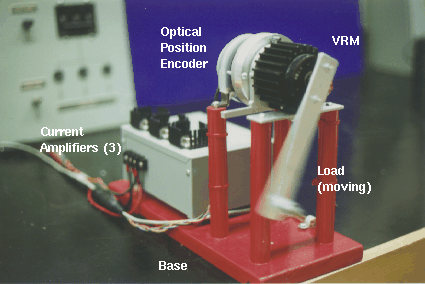The Variable Reluctance Motor (VRM) is a type of motor with significant industrial relevance. Although it is usually used as a "stepper-motor," in products such as computer printers, it can be made to behave like a servomotor if properly controlled. In this mode, it has a number of advantages over the typical brushed servomotor, including a larger torque-to-mass ratio, better thermal characteristics (the windings are in the stator, on the outside of the motor), brushless operation, and a less expensive construction. However, it is challenging to control the VRM in this manner because it is highly nonlinear, and it requires electronic commutation.

The purpose of our VRM experiment is twofold. First, it is of industrial relevance to demonstrate a working nonlinear controller specific to the VRM. Second, it serves as a test bed for general adaptive nonlinear controllers, which can be applied to a broad class of nonlinear systems, e.g., robotic manipulators and chemical pH regulation. Our approach is to model the VRM's characteristic that relates motor torque to rotor position and winding current as a multivariable B-spline. We then design an adaptive controller, which tunes the spline coefficients on-line. The rotor angle can track a desired trajectory or provide a desired torque, just as a servomotor would. The photograph above shows the controller in action. In this experiment, the rotor is attached to a pendulum (the load), and is tracking a desired trajectory.
The VRM control algorithm, which has appeared in several publications, can be generalized to a large class of nonlinear systems. This is the subject of our current research.
Scott Bortoff, bortoff@control.toronto.edu